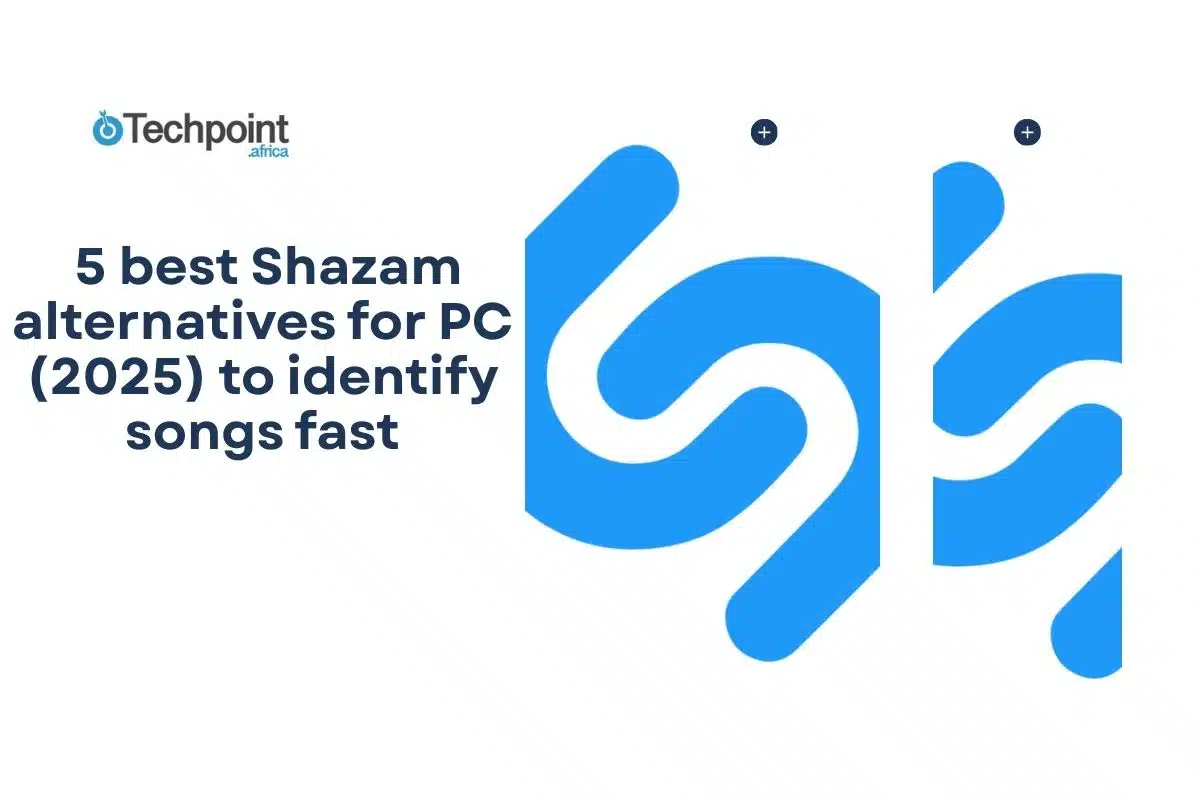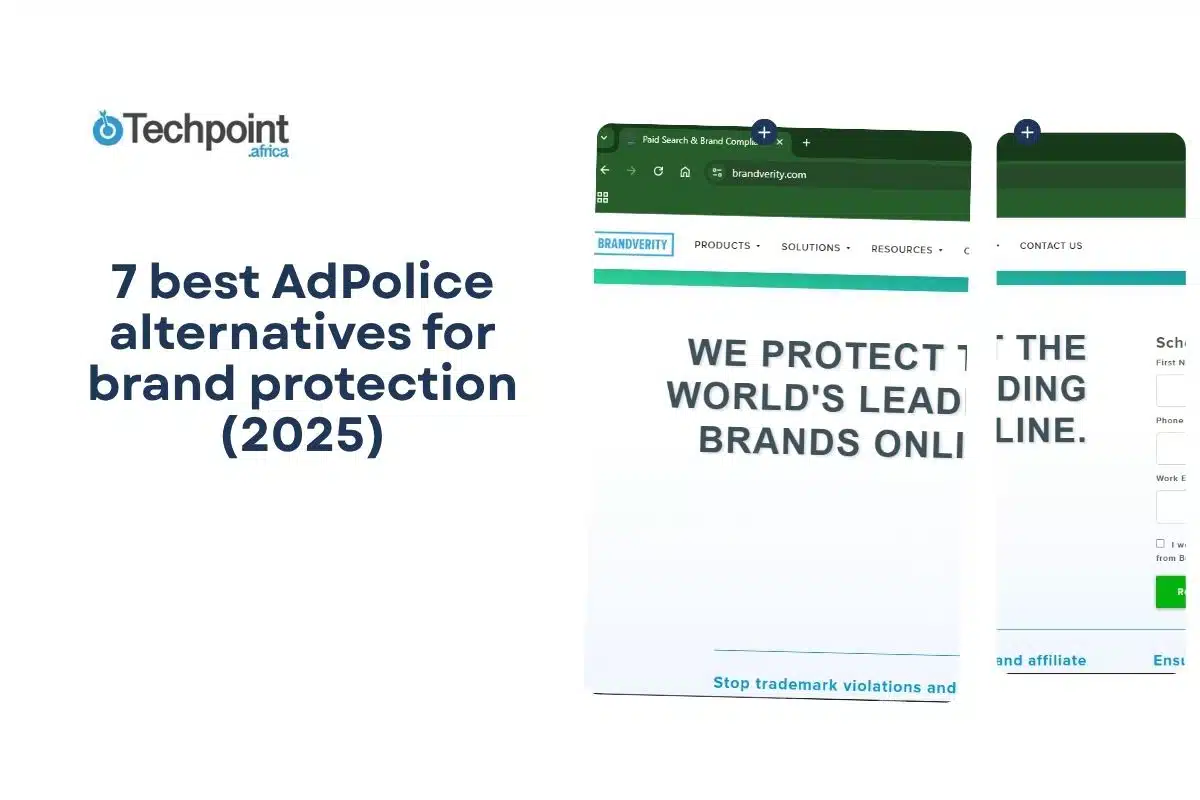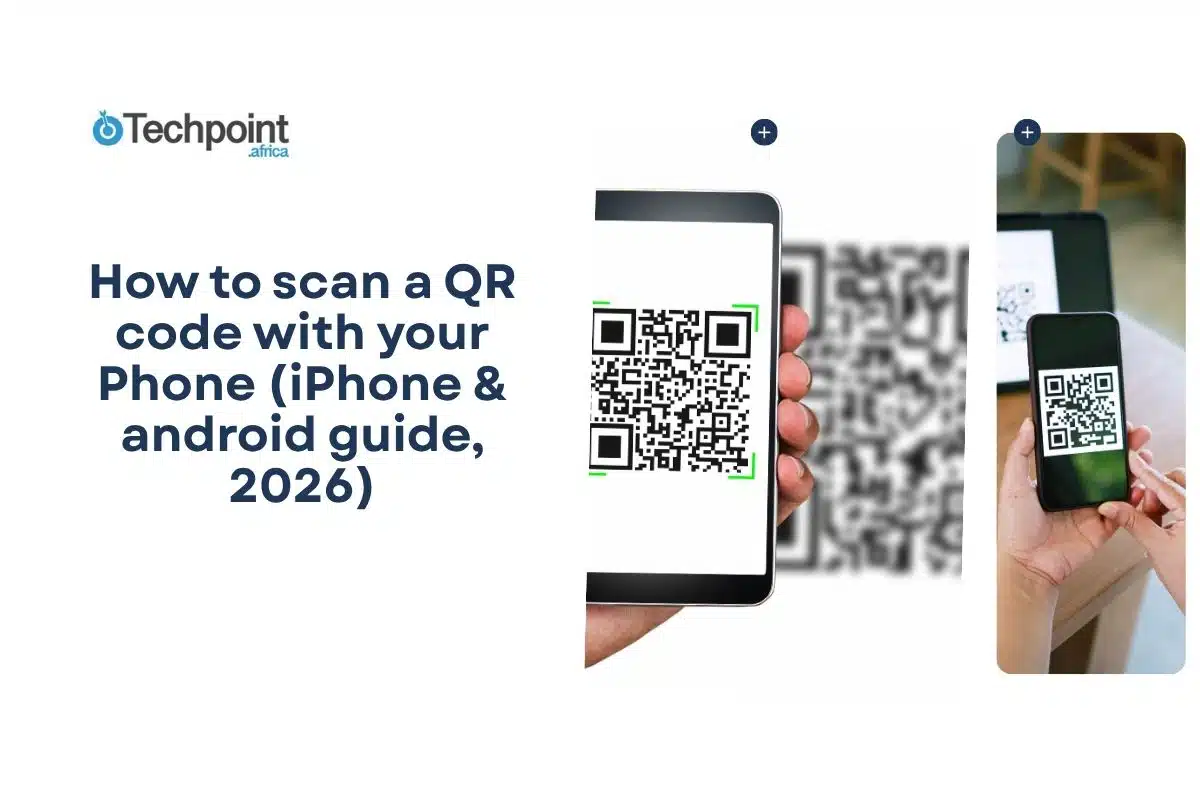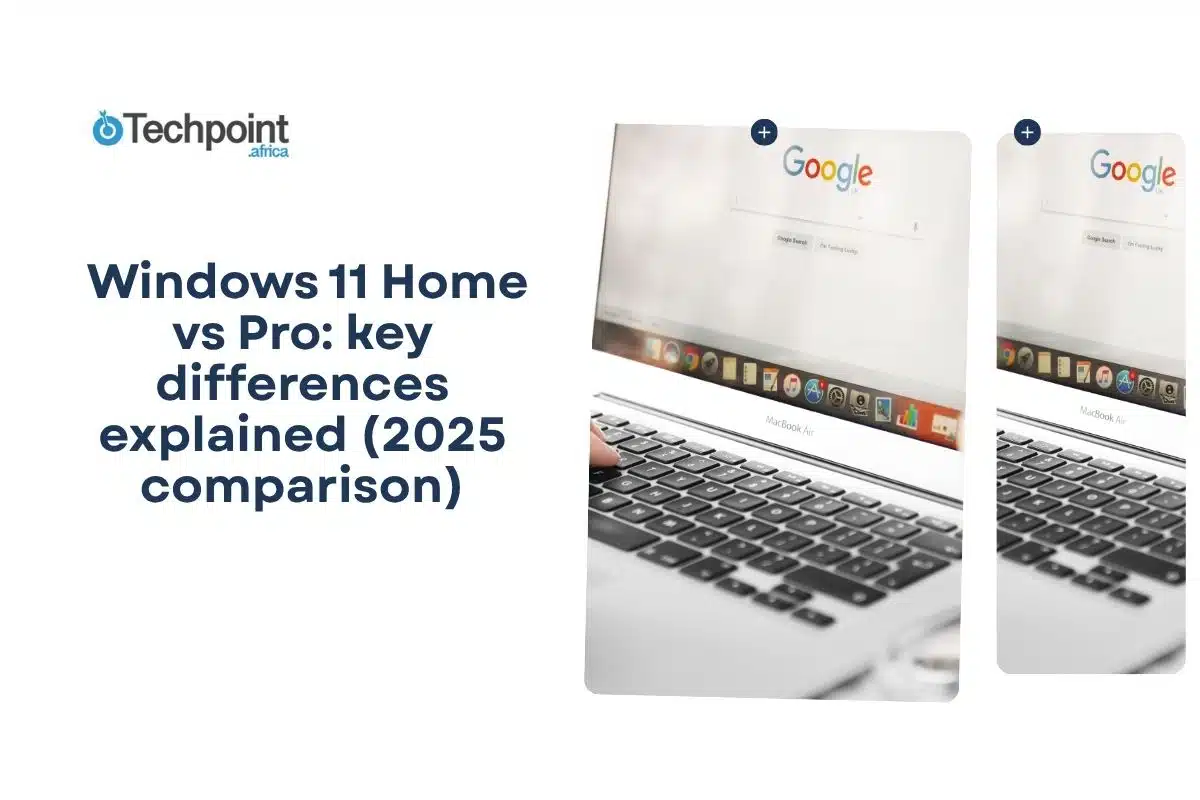
I’ve often caught a song playing in the background while working on my laptop and needed to know its singer and title.
Shazam usually nails it on my phone in seconds, but the story is not as expected on PC. Most song trackers like Shazam are built for mobile, leaving the desktop experience unfilled, especially when you want to recognize songs from files or system audio instead of a microphone. To see what works, I tested 5 alternatives across 100 tracks: polished studio cuts, live bootlegs, remixes, and even a few hummed lines.
The aim wasn’t to skim marketing claims but to find out which options deliver speed and accuracy on a computer. The results made the time spent resourceful, and what follows in this article is a clear look at where each service fits best and where it struggles.
A glimpse at the 5 Shazam alternatives for PC that identify songs fast
This table summarizes what I measured during testing: recognition speed, accuracy across studio vs. live/remix recordings, and best desktop workflow.
| App | Best desktop workflow | Speed (avg) | Accuracy (studio) | Accuracy (live/remix/hum) | Notes |
| ACRCloud (desktop integrations) | Local file scan or mic/line-in via SDK wrappers | 2–6s for file fingerprints | Very high (enterprise DB) | Good — struggles with very short clips | ACRCloud is primarily an SDK/service used by apps and sites. It is strong for file-based recognition and developer integrations. |
| SoundHound (desktop via emulator/wrappers) | Android emulator or WebCatalog wrapper | 3–7s (depends on emulator latency) | Good | Excellent for humming and singing (humming recognition) | SoundHound’s tech is built for voice query and audio fingerprinting. It has no official native Windows .exe app but runs on wrappers/emulators. |
| AudioTag (web) | Upload audio file to site (audiotag.info) | 10–40s (upload + processing) | Good for full clips | Poor for humming/live unless the recording is clean | AudioTag is straightforward and free — upload small clips and get ID results. |
| Musixmatch (desktop/web wrappers) | Desktop wrapper / WebCatalog or integrated desktop lyric app | 3–8s (with local audio) | Very good (lyrics + recognition) | Mixed — better for known recordings | Musixmatch focuses on lyrics sync and recognition; desktop options are wrappers or dedicated apps. |
| AHA Music (web humming) | (web) — hum or sing into the mic | 8–20s | Moderate | Best for humming/singing (if melody is clear) | AHA Musics hum-to-song feature is classic and valuable, but database limits appear in obscure tracks. |
Enterprise services (ACRCloud-backed tools) are the fastest and most accurate for file-based recognition on PCs. For humming, SoundHound and AHA Music remain the best bets. AudioTag is an excellent free fallback for uploaded files when you don’t want to reroute with emulators or SDKs.
So, let’s talk in detail about these alternatives.
1) ACRCloud (desktop integrations & tools)
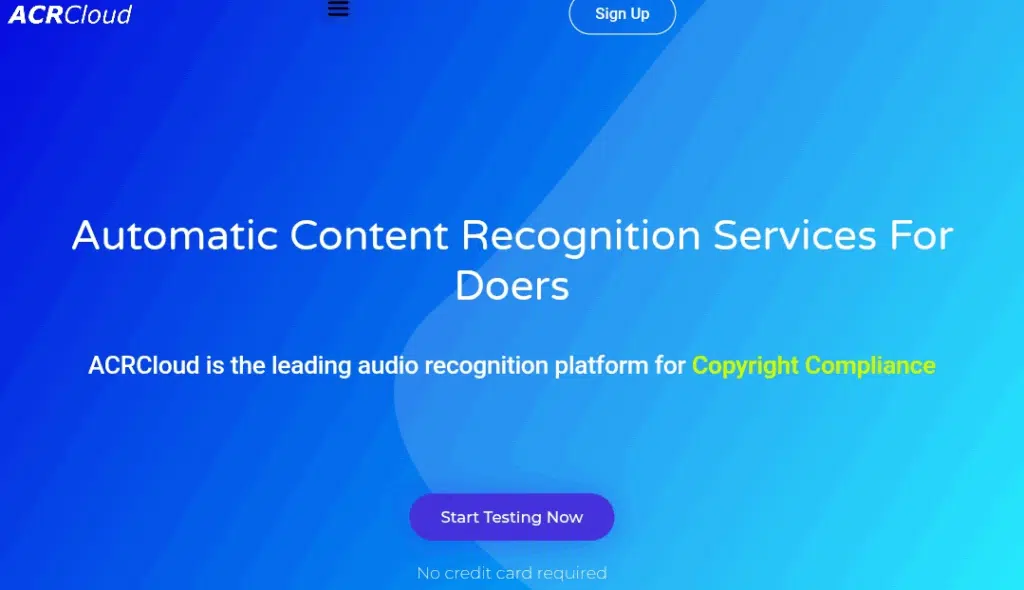
I went into this test expecting ACRCloud to be more of a developer backend than a “usable app” (and that’s correct), but that doesn’t make it irrelevant for PC users. ACRCloud provides the fingerprinting engine behind many web-based recognition tools and services, which is crucial when you need reliable file scanning or to recognize audio captured from a line-in source.
How I tested: I used two ACRCloud-powered sites and a local tool that leveraged ACRCloud’s SDK to index a folder of MP3s. Then, I fed short 5–10 second clips from my 100-track set. For live capture, I used the system stereo mix and a mic.
What worked: For studio recordings, the recognition was nearly instant and reliably accurate; even small sections (6–8 seconds) yielded correct matches because ACRCloud’s database is extensive and tuned for file/fingerprint matching. When I scanned local libraries, the tool quickly and programmatically matched embedded metadata and returned links to services. Their documentation explicitly supports line-in and file recognition for desktop apps, so integration is straightforward if you or a developer wants to build a custom recognition tool.
What didn’t: It’s not a polished consumer GUI out of the box. If you want one-click recognition like Shazam on your Windows taskbar, you’ll need a wrapper app or a web frontend that uses ACRCloud’s API. Additionally, in noisy live environments or when humming is very short, results decline compared to humming-oriented engines.
Who should use it? Power users who want highly accurate file and broadcast recognition on a PC, or developers building a desktop app that identifies songs reliably.
2) SoundHound (desktop via emulator or WebCatalog)

SoundHound markets itself as a music discovery and voice interaction platform. Its core strengths are identifying sung or hummed melodies and handling voice-driven queries. There’s no official native Windows .exe for everyday desktop install. Still, you can run the Android app in an emulator (I used BlueStacks and WebCatalog wrappers) and achieve essentially the same functionality.
How I tested: I ran SoundHound in BlueStacks on Windows and tested both “listen” for the track playing from desktop speakers and the “sing/hum” function. I also tried playing local files and letting the emulator pick up system audio.
What worked: Humming and whistling melodies often yielded results where fingerprint-only systems failed; SoundHound’s database and recognition for melody-based queries were excellent. Identification times were competitive, usually in the 3–7 second range when emulator latency was low. The voice-driven UI made it quick to try guesses or search results.
What didn’t: Emulator overhead adds latency and occasionally causes microphone routing headaches. Also, using it on a desktop feels like a mobile app being shoehorned into a different environment, but it works well if you accept the emulator step.
Who should use it? People who often hum/mutter into their PC mic and want a melody-first recognition method — or those who don’t mind using a lightweight emulator wrapper.
3) AudioTag (online file upload)
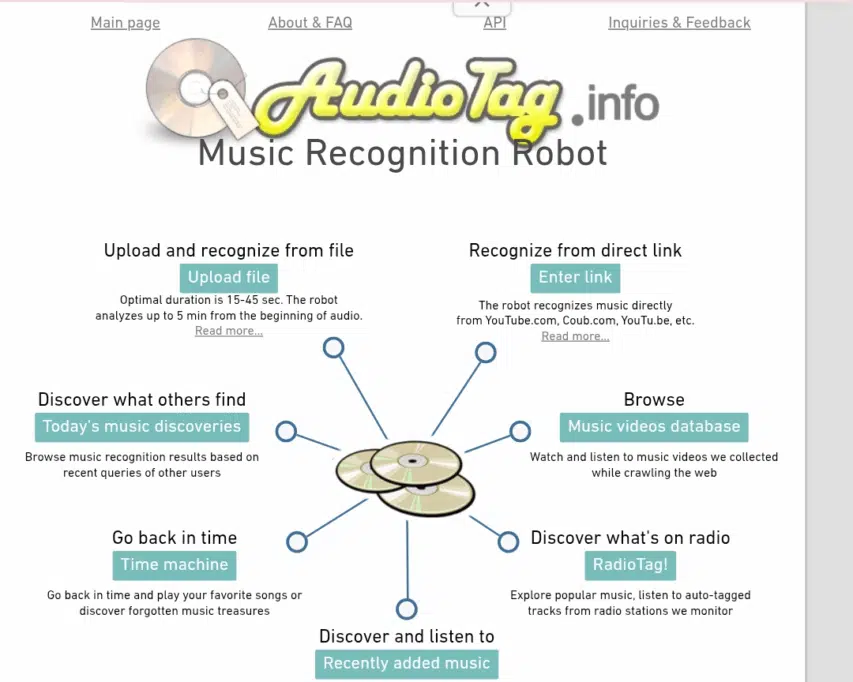
AudioTag is my test’s most straightforward “upload and identify” web service. You simply upload an audio snippet (even 10 seconds can be enough) and the site attempts to identify the track against its fingerprint database.
How I tested: I uploaded multiple file types (mp3, m4a) and short clips from studio tracks and live performances. I also tried an 8-second radio clip and a short remix excerpt.
What worked: For full, clean studio clips, AudioTag mostly returned accurate metadata and even album/cover info. It’s free, simple, and valuable with a recorded file rather than live audio.
What didn’t: Upload and processing sometimes take 10–40 seconds, depending on your connection and the server queue. It also struggles with humming, short fragments under 6 seconds, and noisy live mixes. The interface is utilitarian but reliable enough for casual users when it finds a match.
Who should use it? Anyone with a file to identify and no interest in installing emulators or SDKs should use it. It’s fast, free, and no account is needed.
4) Musixmatch (desktop/web wrappers)

Musixmatch is best known for synchronized lyrics, and that focus shows up in its recognition: it matches audio to tracks and surfaces the lyric sync. Musixmatch offers a web app and desktop wrappers via WebCatalog (or native desktop installers provided by some third-party sites), making it easy to use on a PC.
How I tested: I used Musixmatch’s desktop wrapper and the web player to play tracks from my library and stream radio. I also tested recognition speed and lyrics matching.
What worked: For recognized studio tracks, Musixmatch was fast and gave the extra value of synced lyrics, which is excellent if you want to know a line while you identify the song. Accuracy on studio recordings was high, and the lyric match often confirmed the track when minor fingerprint disagreements happened.
What didn’t: It’s not optimized for humming and is limited when the audio is a live performance or remix. Also, desktop distribution is less official than mobile; the WebCatalog wrapper works fine but is not “native” as some users expect.
Who should use it? People who want an identification tool that gives instant, synced lyrics on their desktop.
5) AHA Music (web humming & singing)
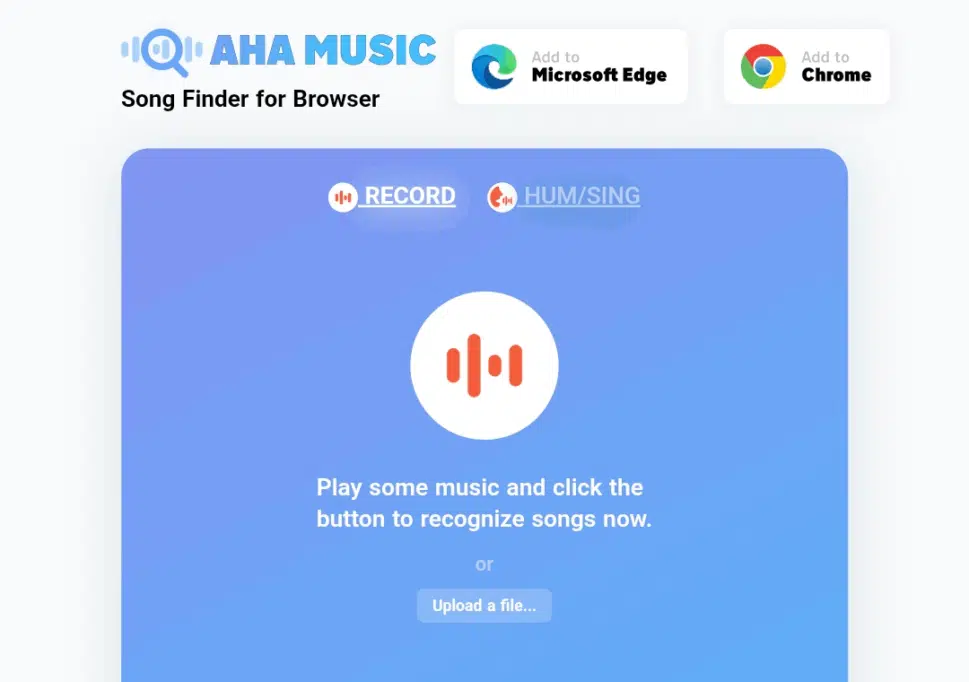
AHA Music is one of the original web services that lets you hum a tune into your mic and try to identify it. It still works and can be surprisingly good with clear melodies.
How I tested: I hummed and sang from my PC mic ( snippets of pop melodies and a few obscure tunes) and timed recognition. I also played short live recordings through the speakers to see how AHA Music handled audio capture.
What worked: AHA Music performed best when the melody was clear and hummed in tune. It’s still one of the few web-first services tuned to human-sung input, and it returns quick suggestions when it finds pattern matches. Results were often comparable on simple melodies for head-to-head humming tests (vs SoundHound).
What didn’t: Database limitations show with obscure or highly altered covers; AHA Music’s success rate drops on noisy live recordings and complex remixes. The interface is retro but serviceable.
Who should use it? Anyone who wants to hum into a PC mic and get a quick result without installing anything.
Situations that might make these Shazam alternatives unable to identify songs fast
Even though these alternatives are the best options available for shazaming songs on your PC, I’ve noticed that their accuracy and speed are reduced in certain situations. These conditions don’t make them useless, but they affect how well they work. They’re:
Background Music
The software often struggles when a track plays at low volume with other sounds around it. In places like cafés or public spaces, overlapping conversations, noise, or echoes interfere with recognition. During my tests, softer background tracks either produced no result or returned the wrong match, highlighting the sensitivity of these tools to audio clarity.
Live Recordings
Concert recordings and live albums rarely match perfectly with studio versions. The applause, altered tempos, and crowd participation confuse recognition systems. Sometimes, the tool will return the original studio track, but at other times, it fails entirely. This makes identifying bootlegs or unofficial live takes a frustrating task. For users hoping to catalog live performances, these services are not reliable.
Covers and Remixes
If you send a remix or acoustic cover to these alternatives, the system may not find it at all. ACRCloud’s large database handled some remixes, but others didn’t at all. Lyric-based systems also struggle because remixes often change structure, and covers might feature different arrangements. This makes it difficult if you’re specifically trying to identify a remix that isn’t in the mainstream catalog. So you may have to accept that not every alternate version is traceable.
Classical Pieces
Classical music poses a unique challenge because the same composition exists in countless versions. For example, Beethoven’s Symphony No. 5 has dozens of recordings by different orchestras and conductors. Recognition systems can usually identify the work itself but not the specific performance. The limitations are clear for classical fans who care about conductor, orchestra, or year of release.
Non-English Songs
Finally, international tracks often expose gaps in databases. English-language pop is covered extensively, but regional hits in Spanish, French, Japanese, or Yoruba aren’t always cataloged. The app can’t return a result when the song isn’t in the database. This means fans of global music might encounter frequent dead ends.
Finally,
The time spent testing taught me that there isn’t a single solution that covers every situation. If you want precision with saved files, ACRCloud and Musixmatch are unmatched. When the task is humming or whistling, SoundHound and AHA Music actually respond well. AudioTag proved reliable for quick uploads, while Musixmatch earned a place for its lyric support on desktop.
Ultimately, I built a small toolkit rather than relying on a single app. ACRCloud handles my archive of audio files, SoundHound solves the moments I only remember a tune, and AudioTag covers odd clips that don’t fit anywhere else. That mix gave me more certainty and less frustration than trying to make Shazam work on my PC.
FAQs on Shazam alternatives for PC
Q: Will these alternatives run entirely offline?
- A: Almost all of these tools depend on an internet connection. ACRCloud creates an audio fingerprint of your sample and then checks it against its massive server-side database, which requires connectivity. The same is true for AHA Music and AudioTag, as both are web-based services that process uploads remotely. SoundHound caches some basic data locally but still requires a live connection for accurate song matches. Without the web link, recognition quality drops sharply.
Q: Which one is best for humming?
- A: SoundHound and AHA Music are designed for melody-based input. In my humming tests, both consistently recognized tunes faster and more accurately than lyric-based apps like Musixmatch. SoundHound has refined melody recognition over the years. Midomi’s tool is surprisingly capable for casual users who want to identify a song stuck in their head without remembering lyrics.
Q: Are there privacy concerns with uploading audio files?
- A: Yes. Services like AudioTag require you to upload a clip, which is then processed on their servers. This means the audio leaves your device, and potentially, private recordings could be stored or logged. Each provider has its privacy policy, so if you’re working with sensitive or unreleased material, review their terms before uploading.
Q: Can any of these identify live radio or TV audio from my PC?
- A: Yes. ACRCloud-powered tools can analyze line-in or system audio and effectively pick up live broadcasts. SoundHound can also capture and identify system playback, though noisy environments or overlapping advertisements can sometimes confuse the match.
Q: Which is easiest to use on Windows without installing emulators?
- A: AudioTag is the most straightforward, since it’s entirely web-based. Musixmatch, when run through WebCatalog, is also easy and lightweight. AHA Music runs entirely in the browser and is excellent for humming. By contrast, SoundHound is primarily a mobile app, and while you can run it through wrappers, it’s less convenient for pure desktop use.
Q: What about identifying covers or remixes?
- A: ACRCloud’s fingerprinting technology broadly recognizes covers and remixes. By contrast, lyric-based tools like Musixmatch often fail when the lyrics are altered or absent.
Q: Are these free?
- A: AudioTag and AHA Music are free for uploads or humming. Musixmatch and SoundHound offer unrestricted use but keep certain features behind paid tiers. ACRCloud is primarily a commercial developer tool, though it does provide trial access for testing.
Q: Which one would I recommend to a friend?
- A: For everyday laptop users, the best setup is to combine an ACRCloud-powered tool for uploaded files or broadcast audio, AHA Music for humming, and AudioTag as a quick, no-install backup.

